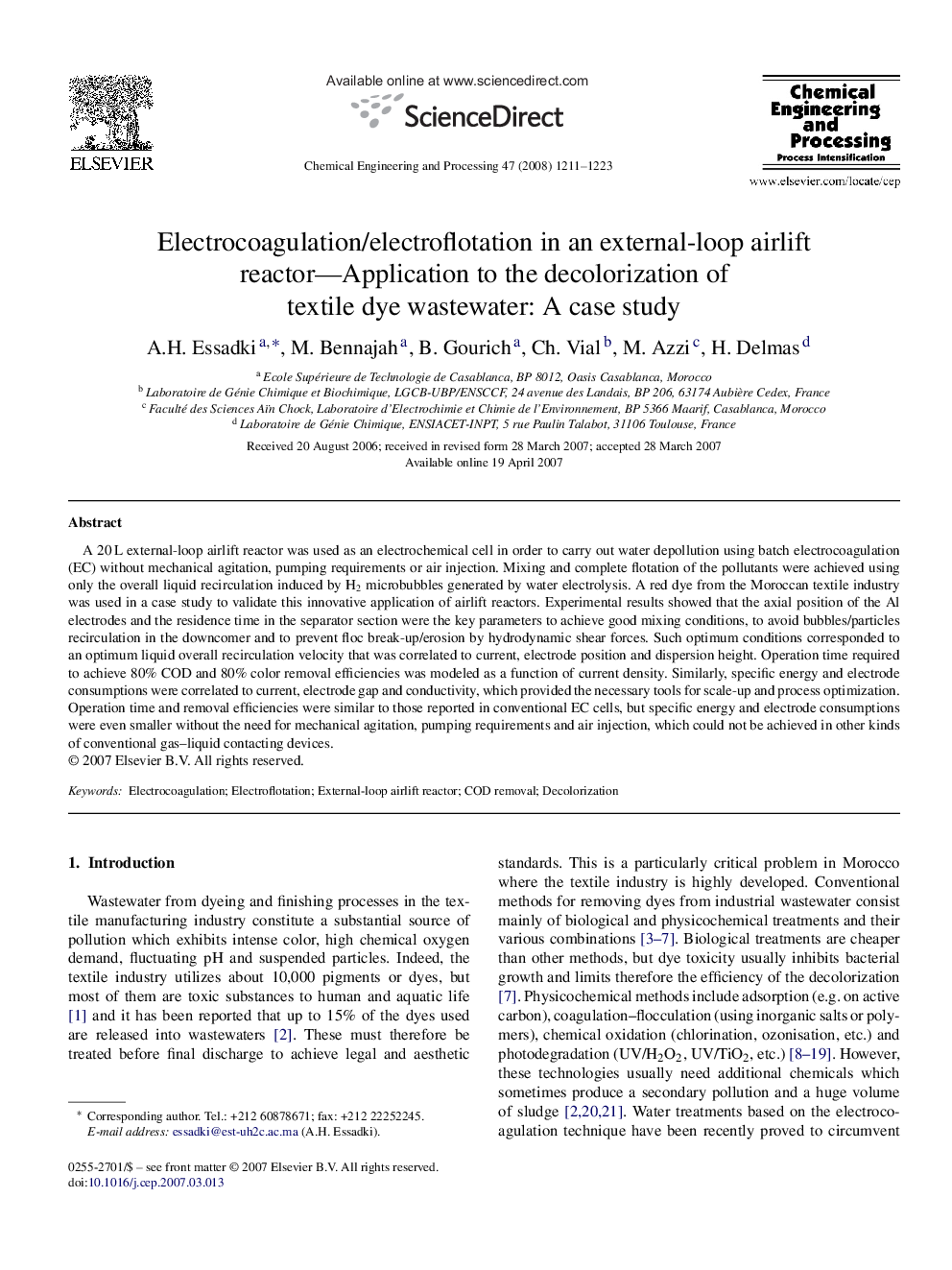| Article ID | Journal | Published Year | Pages | File Type |
|---|---|---|---|---|
| 688083 | Chemical Engineering and Processing: Process Intensification | 2008 | 13 Pages |
A 20 L external-loop airlift reactor was used as an electrochemical cell in order to carry out water depollution using batch electrocoagulation (EC) without mechanical agitation, pumping requirements or air injection. Mixing and complete flotation of the pollutants were achieved using only the overall liquid recirculation induced by H2 microbubbles generated by water electrolysis. A red dye from the Moroccan textile industry was used in a case study to validate this innovative application of airlift reactors. Experimental results showed that the axial position of the Al electrodes and the residence time in the separator section were the key parameters to achieve good mixing conditions, to avoid bubbles/particles recirculation in the downcomer and to prevent floc break-up/erosion by hydrodynamic shear forces. Such optimum conditions corresponded to an optimum liquid overall recirculation velocity that was correlated to current, electrode position and dispersion height. Operation time required to achieve 80% COD and 80% color removal efficiencies was modeled as a function of current density. Similarly, specific energy and electrode consumptions were correlated to current, electrode gap and conductivity, which provided the necessary tools for scale-up and process optimization. Operation time and removal efficiencies were similar to those reported in conventional EC cells, but specific energy and electrode consumptions were even smaller without the need for mechanical agitation, pumping requirements and air injection, which could not be achieved in other kinds of conventional gas–liquid contacting devices.
